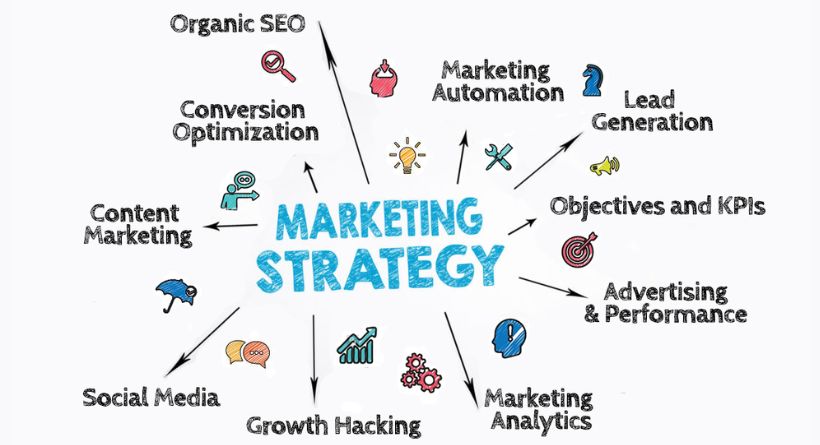Are you struggling to create a well-structured, detailed business plan that stands out from the competition? You’re not alone. Many entrepreneurs and small business owners grapple with defining the problems their business plan should address, which often leads to frustration and a lackluster end product. In this blog post, we’ll not only accept this common problem but also promise to give you a comprehensive solution. By providing an overview of the steps involved in crafting a standout business plan, we will prove that we are committed to helping you overcome these challenges. Let us grab your attention by addressing the pain point head-on: a strong business plan is essential for securing funding, attracting partners, and paving the way to success. Stick with us and we’ll show you how to build a detailed business plan that stands out, using our free template as a guide.
The Essential Elements of an Effective Business Plan

Executive Summary
Your business plan kicks off with the executive summary. This vital section offers a concise overview of your entire plan, enticing potential investors and urging them to keep reading. A well-crafted executive summary sets the stage for the rest of your business plan.
Company Description
Following the executive summary, present a thorough company description. Outline your business goals, mission statement, and vision. Clarify what your company does and how it plans to achieve success. Don’t forget to highlight your unique selling points to differentiate your business from competitors.
Market Analysis
A comprehensive market analysis is crucial for any business plan. This section examines your target market, competition, and industry trends. By understanding your potential customers and the competitive landscape, you’ll make informed decisions about your business.
Organization and Management Structure
In this part of your business plan, showcase the key players responsible for running your company. Incorporate an organizational chart detailing the roles and responsibilities of your team members. Also, provide brief biographies of your management team, highlighting their relevant experience and skills.
Product Line or Services
Describe the products or services your company offers in this section. Explain how they fulfill a market need and what sets them apart from competitors. Emphasize any unique features or patents that give your offerings a competitive edge.
Marketing and Sales Strategy
Here, outline how you’ll attract and retain customers. Detail your unique selling proposition (USP), as well as your chosen marketing channels, such as social media, email campaigns, or content marketing. Additionally, outline your sales process and set targets for revenue growth.
Funding Request
If you’re seeking funding, include a section detailing your funding request. Clearly state the amount of money you need, how you’ll use it, and your plans for repaying any loans. Potential investors will want to see that you’ve thought this through and have a solid plan for using their funds wisely.
Financial Projections
Financial projections are critical for any business plan. They show potential investors that you’ve carefully considered your financial future. Include realistic revenue forecasts, expense projections, and cash flow statements. Also, address any potential risks and contingencies to demonstrate your preparedness for unforeseen challenges.
Appendix
Lastly, your business plan’s appendix should contain any supporting documents, such as resumes, market research data, or product brochures. While not mandatory, including these materials can help strengthen your business plan and provide additional context for potential investors.
Read More: What’s a Subscription Business Model & How Does It Work? 2023
Crafting a Standout Executive Summary

Grabbing Attention with a Powerful Opening
The opening of your executive summary is your chance to make a strong first impression. Begin with a captivating statement that clearly communicates the essence of your business. For example, “Our innovative software streamlines the hiring process, saving companies time and money while connecting them with top talent.”
Incorporating the Focus Keyword in the Summary
To optimize your business plan for search engines, include the focus keyword, “business plan,” in your executive summary. This will signal to search engines that your content is relevant and valuable for users searching for information on business plans.
Tips for a Concise, Impactful Summary
To make your executive summary stand out, keep it brief and focused. Aim for no more than two pages and highlight only the most important aspects of your business plan. Use clear, concise language, and avoid jargon or overly technical terms. A well-written summary will engage your audience and encourage them to continue reading.
Conducting a Thorough Market Analysis

Identifying Your Target Audience
Understanding your target audience is crucial for the success of your business. Start by creating detailed buyer personas that represent your ideal customers. Consider demographic factors, such as age, gender, and income, as well as psychographic factors, like interests and values. This insight will help you tailor your marketing efforts and better serve your customers.
Analyzing Competitors
An in-depth competitor analysis helps you identify your rivals’ strengths and weaknesses. Examine their product offerings, pricing strategies, marketing efforts, and customer reviews. By understanding your competitors, you can devise tactics to differentiate your business and capitalize on their shortcomings.
Addressing Market Trends and Opportunities
Stay current with market trends and opportunities to ensure your business plan remains relevant and competitive. Research industry reports, news articles, and social media to identify emerging trends and potential growth areas. By addressing these opportunities, you can demonstrate to potential investors that your business is adaptable and prepared for future challenges.
Building a Solid Organizational Structure

Defining Roles and Responsibilities
A well-defined organizational structure is crucial for the success of your business. Clearly outline the roles and responsibilities of each team member, ensuring everyone understands their duties and how they contribute to the company’s objectives. This clarity helps prevent confusion and promotes efficient collaboration.
Choosing the Right Management Team
Assemble a strong management team with diverse skills and experiences to lead your company. Look for individuals who complement your own abilities and who bring expertise in areas like finance, marketing, or operations. A talented management team can guide your business through challenges and help you achieve your goals.
Creating an Advisory Board
An advisory board can provide valuable insights and guidance for your business. Consider inviting industry experts, mentors, or successful entrepreneurs to join your advisory board. They can offer fresh perspectives, help you avoid pitfalls, and connect you with resources to fuel your business’s growth.
Designing a Comprehensive Marketing and Sales Strategy

Identifying Your Unique Selling Proposition (USP)
Your USP sets your business apart from the competition. Identify what makes your products or services unique, and emphasize this in your marketing materials. A compelling USP can attract customers and give you a competitive edge in the market.
Selecting Appropriate Marketing Channels
Choose marketing channels that best align with your target audience and business goals. Options include social media, content marketing, email campaigns, or paid advertising. Test and analyze different channels to determine which are most effective for your business.
Setting Sales Targets and Projections
Establish realistic sales targets to guide your sales team and track your progress. Break down your targets into monthly or quarterly goals, and monitor your performance regularly. Adjust your sales strategy as needed to stay on track and achieve your objectives.
Preparing Financial Projections

Creating Realistic Revenue Forecasts
Accurate revenue forecasts are vital for your business plan. Use historical data, industry benchmarks, and market research to project your future sales. Regularly review and update your forecasts to ensure they remain relevant and achievable.
Estimating Expenses and Cash Flow
Monitor your expenses and cash flow to maintain a healthy financial position. Create a detailed expense budget and a cash flow statement to identify potential cash shortfalls and surpluses. This information can help you make informed decisions about investments and cost-saving measures.
Assessing Risks and Contingencies
Every business face risks and uncertainties. Identify potential challenges, such as market fluctuations or supply chain disruptions, and develop contingency plans to address them. Demonstrating preparedness for unforeseen events can instill confidence in potential investors.
Read More: The Impressive Business Podcasts You Need to Be Listening To (2023)
Using Our Free Business Plan Template

Customizing the Template for Your Business
Our free business plan template offers a solid foundation for creating your own plan. Customize the template to suit your unique business, ensuring it reflects your goals, strategies, and target market.
Tips for Making Your Business Plan Stand Out
To make your business plan stand out, focus on clarity, conciseness, and professionalism. Use compelling language, avoid jargon, and incorporate visuals, like charts and graphs, to support your data. A polished, well-structured plan will impress potential investors and partners.
Presenting Your Business Plan to Investors and Partners
When presenting your business plan, be confident, enthusiastic, and well-prepared. Anticipate questions and be ready with thoughtful, data-driven responses. By effectively showcasing your business plan, you can secure the support and resources needed to bring your vision to life.
Conclusion
In conclusion, a detailed and well-crafted business plan is essential for the success of your venture. By following the steps outlined in this article, you can create a compelling plan that addresses crucial aspects such as the executive summary, market analysis, organizational structure, marketing and sales strategy, and financial projections. Remember to leverage our free business plan template to streamline the process and make your plan stand out to investors and partners. With determination and a strong plan in place, you’re well-equipped to turn your entrepreneurial vision into a thriving business.
FAQs
What is the purpose of a business plan?
A business plan serves as a roadmap for your business, outlining your goals, strategies, and the steps you’ll take to achieve them. It also helps you secure funding from investors and partners.
How long should my business plan be?
A business plan’s length can vary, but it should be concise and to the point. Aim for 15-25 pages for a standard plan, including essential sections like the executive summary, market analysis, and financial projections.
How often should I update my business plan?
Review and update your business plan regularly, at least annually or when significant changes occur within your business or industry. This ensures your plan remains relevant and reflects your current goals and strategies.
What should I include in the financial projections section?
The financial projections section should include revenue forecasts, expense budgets, cash flow statements, and an assessment of risks and contingencies.
How can I make my business plan stand out to investors?
To make your business plan stand out, focus on clarity, conciseness, and professionalism. Use compelling language, avoid jargon, and incorporate visuals like charts and graphs to support your data.







